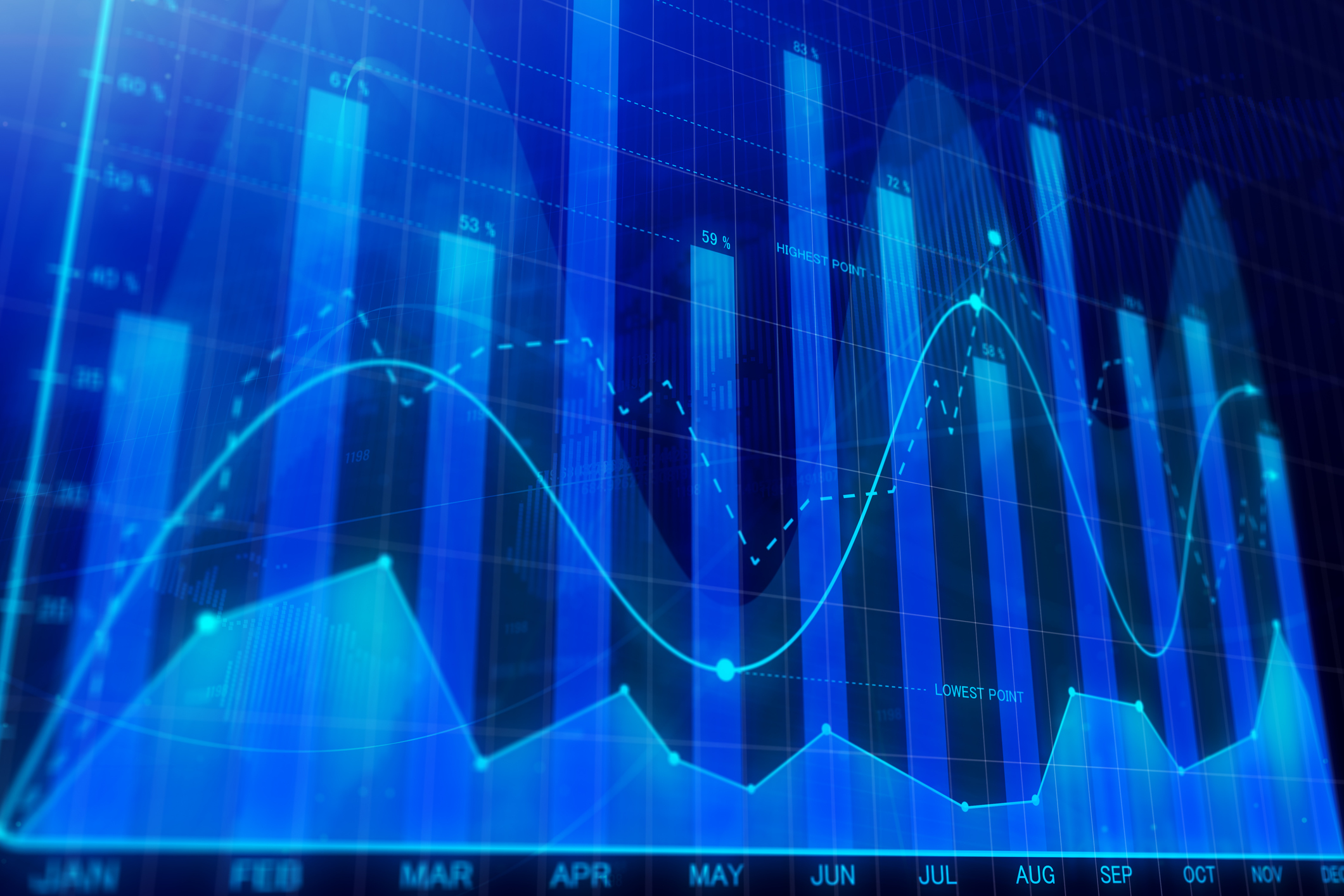Stock Market Today: Red-Hot June CPI Cools Off Stocks
U.S. inflation raced ahead in June at its fastest clip since 2008, prompting at least a short pause in stocks' recent ascent to new heights.


Investors on Tuesday received the latest update on America's inflation situation, and a wobbly day for stocks indicated they were having issues with it.
U.S. consumer prices in June easily outstripped expectations by jumping 0.9% month-over-month and 5.4% year-over-year – both the largest such moves since 2008. A 0.9% MoM rise in the so-called core consumer price index was even headier.
"Stripping away food and energy, it was the highest print since November 1991 on a year-over-year basis," says Cliff Hodge, chief investment officer for Cornerstone Wealth. "However, moving forward, we expect these inflation numbers to begin to cool. June 2020 was the absolute low for core CPI during the pandemic shutdown, so the comparisons get tougher from here."
From just $107.88 $24.99 for Kiplinger Personal Finance
Become a smarter, better informed investor. Subscribe from just $107.88 $24.99, plus get up to 4 Special Issues

Sign up for Kiplinger’s Free Newsletters
Profit and prosper with the best of expert advice on investing, taxes, retirement, personal finance and more - straight to your e-mail.
Profit and prosper with the best of expert advice - straight to your e-mail.
But just how much of this inflation is truly transitory is still up for debate.
"Businesses are currently passing along their higher input costs (for supplies, products, labor) down to their customers," says Jennifer Lee, senior economist for BMO Capital Markets. "Earlier this morning, the NFIB's latest survey for June showed that 44% of businesses were planning to raise their selling prices, the biggest share since 1979. Producer prices for May were up over 5% from 2019's levels, while import prices are 4% higher."
"The transitory debate is far from over," she adds. "In fact, it got a little hotter."
The major indexes swung between small gains and losses before finishing in the red. The Dow Jones Industrial Average ended Tuesday off 0.3% to 34,888, the S&P 500 finished 0.4% lower to 4,369, and the Nasdaq Composite closed with a 0.4% decline to 14,677.
Other action in the stock market today:
- The small-cap Russell 2000 lurched 1.8% lower to 2,240.
- Second-quarter earnings season kicked off with a bang for soft drink specialist PepsiCo (PEP, +2.3%). The company brought in adjusted earnings per share (EPS) of $1.72 on $19.2 billion in revenues over the three-month period, handily outstripping analysts' consensus expectations. PEP also raised its full-year adjusted EPS forecast, citing rising demand as many restaurants and venues reopen.
- Several big banks also reported earnings today. Goldman Sachs (GS) reported EPS of $15.02 on $15.4 billion in revenue, well above expectations, as revenues in its investment banking unit soared amid a surging initial public offering (IPO) market. JPMorgan Chase (JPM) also beat estimates in its second quarter, unveiling earnings of $3.78 per share on $31.4 billion in revenues, due in part to the financial firm releasing $3 billion in loan loss reserves. The results failed to impress investors, though, with GS slipping 1.0% and JPM ending the day down 1.4%.
- U.S. crude oil futures rose 1.6% to end at $75.25 per barrel – their highest settlement since October 2018.
- Gold futures edged up 0.2% to $1,809.90 an ounce.
- The CBOE Volatility Index (VIX) gained 6.3% to 17.18.
- Bitcoin declined 1.7% to $32,302.97. (Bitcoin trades 24 hours a day; prices reported here are as of 4 p.m. each trading day.

All Eyes on Healthcare
While certain inflationary pressures, such as sky-high used car prices, do seem destined to retreat, some rising prices are expected to persist for years – such as in healthcare.
Back in 2019, the Centers for Medicare & Medicaid Services projected healthcare spending would grow by 5.3% annually through 2028, which includes expectations for 2.4% annual growth in healthcare prices – higher than the 2.2% five-year rate of overall inflation expected by the bond market, according to Federal Reserve Economic Data.
"Although the pandemic caused people to defer care throughout much of 2020, a rebound and then continuation of the trends beyond 2021 would drive health care spending to historic levels in the coming years," says consulting and advisory firm Deloitte.
Investors have numerous options at their disposal for leveraging this long-term spending trend to their advantage. Income hunters will often flock to blue-chip pharma stocks that throw off ample cash. Those with a nose for growth will naturally gravitate toward often-explosive biotech stocks, but remember: You can still reap the benefits of this cutting-edge industry while paring back risk through the use of these nine exchange-traded funds (ETFs).
Importantly, a rising tide in healthcare spending should lift numerous boats. And investors looking to put their money to work both for the rest of the year, as well as the rest of the decade, can find a starting point with this list of healthcare opportunities.
Profit and prosper with the best of Kiplinger's advice on investing, taxes, retirement, personal finance and much more. Delivered daily. Enter your email in the box and click Sign Me Up.
Kyle Woodley is the Editor-in-Chief of WealthUp, a site dedicated to improving the personal finances and financial literacy of people of all ages. He also writes the weekly The Weekend Tea newsletter, which covers both news and analysis about spending, saving, investing, the economy and more.
Kyle was previously the Senior Investing Editor for Kiplinger.com, and the Managing Editor for InvestorPlace.com before that. His work has appeared in several outlets, including Yahoo! Finance, MSN Money, Barchart, The Globe & Mail and the Nasdaq. He also has appeared as a guest on Fox Business Network and Money Radio, among other shows and podcasts, and he has been quoted in several outlets, including MarketWatch, Vice and Univision. He is a proud graduate of The Ohio State University, where he earned a BA in journalism.
You can check out his thoughts on the markets (and more) at @KyleWoodley.
-
 $100 Fee Turning Away Visitors from National Parks
$100 Fee Turning Away Visitors from National ParksDiscover how the new $100 fee will impact your experience visiting 11 of America's most popular parks.
-
 Is Mechanical Breakdown Insurance Better Than an Extended Car Warranty?
Is Mechanical Breakdown Insurance Better Than an Extended Car Warranty?More insurers are starting to offer mechanical breakdown insurance to new car owners. What is it and should you buy it?
-
 What to Do When You Bank Lowers Your APY
What to Do When You Bank Lowers Your APYWhy banks lower APYs, options you can explore when it happens and whether more rate cuts are on the horizon.
-
 Dow Hits New High Then Falls 466 Points: Stock Market Today
Dow Hits New High Then Falls 466 Points: Stock Market TodayThe Nasdaq Composite, with a little help from tech's friends, rises to within 300 points of its own new all-time high.
-
 'Donroe Doctrine' Pumps Dow 594 Points: Stock Market Today
'Donroe Doctrine' Pumps Dow 594 Points: Stock Market TodayThe S&P 500 rallied but failed to turn the "Santa Claus Rally" indicator positive for 2026.
-
 Stocks Struggle for Gains to Start 2026: Stock Market Today
Stocks Struggle for Gains to Start 2026: Stock Market TodayIt's not quite the end of the world as we know it, but Warren Buffett is no longer the CEO of Berkshire Hathaway.
-
 If You'd Put $1,000 Into Lowe's Stock 20 Years Ago, Here's What You'd Have Today
If You'd Put $1,000 Into Lowe's Stock 20 Years Ago, Here's What You'd Have TodayLowe's stock has delivered disappointing returns recently, but it's been a great holding for truly patient investors.
-
 If You'd Put $1,000 Into 3M Stock 20 Years Ago, Here's What You'd Have Today
If You'd Put $1,000 Into 3M Stock 20 Years Ago, Here's What You'd Have TodayMMM stock has been a pit of despair for truly long-term shareholders.
-
 Dow Rises 497 Points on December Rate Cut: Stock Market Today
Dow Rises 497 Points on December Rate Cut: Stock Market TodayThe basic questions for market participants and policymakers remain the same after a widely expected Fed rate cut.
-
 JPMorgan's Drop Drags on the Dow: Stock Market Today
JPMorgan's Drop Drags on the Dow: Stock Market TodaySmall-cap stocks outperformed Tuesday on expectations that the Fed will cut interest rates on Wednesday.
-
 Crypto Trends to Watch in 2026
Crypto Trends to Watch in 2026Cryptocurrency is still less than 20 years old, but it remains a fast-moving (and also maturing) market. Here are the crypto trends to watch for in 2026.
